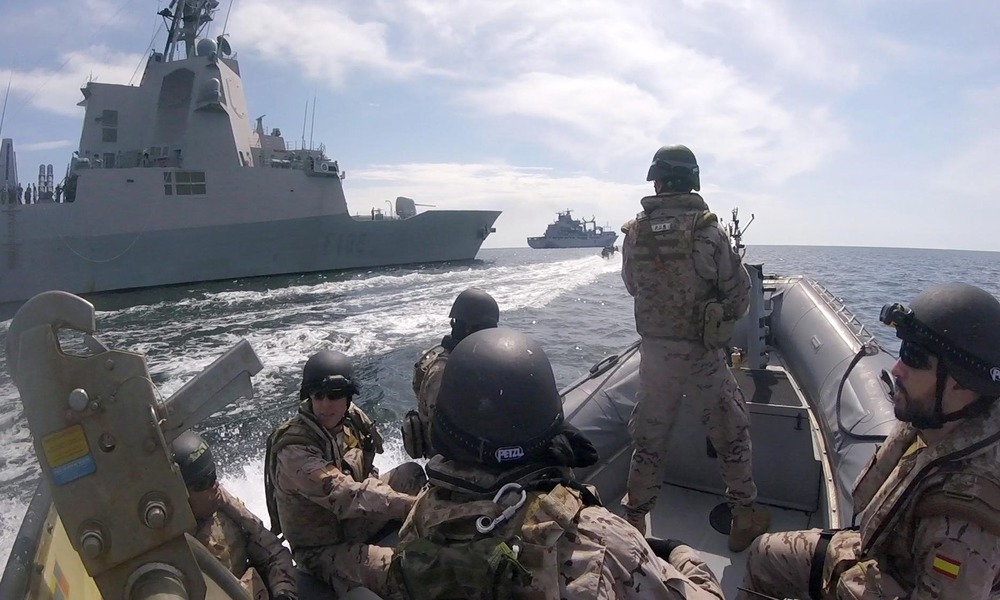BALTIC MONITOR
Date: 19 June 2019
U.S. Navy’s Second Fleet Takes Part in BALTOPS, the Second Phase of the Baltic Protector Exercise
From the end of May until the beginning of July, a series of naval exercises, with varying intensity, is being held by NATO forces and its partner countries in the Baltic Sea. The main phase of the Baltic Protector military training is the annual BALTOPS naval exercise. The 47th edition of the exercise is being led by the U.S. Navy’s Second Fleet, a military unit reestablished in 2018 in response to the increased threat posed by Russia in the North Atlantic.

The military exercise BALTOPS 2019, which is to end on June 21, is currently being held in the Baltic Sea. The manoeuvres are being headed under the command of the Second Fleet, a branch of the U.S. Navy which is responsible for the protection of the North Atlantic Ocean and the Arctic region. The exercise is led by Vice Admiral Andrew “Woody” Lewis, a U.S. senior officer from Naval Station Norfolk (Virginia, the U.S.) and the Commander of the Second Fleet. The Second Fleet was deactivated in 2011 as part of the reduction programme of the defence budget and the armed forces during Barack Obama’s presidency. The fleet was reestablished in August 2018 due to the growing threat from Russia in the North Atlantic.
50 naval ships, two submarines, 36 aircraft and helicopters, and over 8,000 soldiers are taking part in the BALTOPS exercise. The following 18 countries are participating in the exercise: Belgium, Denmark, Estonia, Finland, France, Germany, Latvia, Lithuania, the Netherlands, Norway, Poland, Portugal, Romania, Spain, Sweden, Turkey, the UK and the USA. The MH-60S Sea Hawk helicopters, which for the first time ever are equipped with two modern systems: the Airborne Laser Mine Detection System (ALMDS) and the Airborne Mine Neutralisation System (AMNS), are also taking part in this Baltic Sea exercise. The Mk 18 Mod 2, the latest unmanned underwater vehicle, is also being tested. This underwater vehicle has two main objectives: to identify naval mines and to effectively deactivate them. As part of this year’s edition of BALTOPS, the allied forces are to carry out a landing operation at Kallaste Beach on the Estonian island of Saaremaa. Soldiers from the USA, Poland, Romania and Estonia are to participate in this exercise. The scenario also assumes that the operation will be supported by the EML Wambola, the Estonian Navy’s command and support ship, the Command of the Estonian Navy and the members of the paramilitary voluntary Estonian Defence League (Estonian: Kaitseliit) from the Saaremaa district.
Support Us
If content prepared by Warsaw Institute team is useful for you, please support our actions. Donations from private persons are necessary for the continuation of our mission.
The BALTOPS exercise has been held annually since the 1970s. This year, the exercise has become the second phase of the Baltic Protector military training, which happens to be spread over a longer period of time than usual. The first phase of the training code-named “Danex” began on May 24 in Denmark. BALTOPS is the second phase of the training. The third and last phase code-named “Amphibex” will start at the beginning of July. Baltic Protector is the first large-scale UK-led military exercise of the Joint Expeditionary Force (JEF). The JEF was established under an agreement signed in London, in June 2018. Its main objective is to defend the Baltic Sea region. The unit consists of military forces from Estonia, the UK, Denmark, Finland, Latvia, Lithuania, the Netherlands, Sweden and Norway.
_________________________________
All texts published by the Warsaw Institute Foundation may be disseminated on the condition that their origin is credited. Images may not be used without permission.














